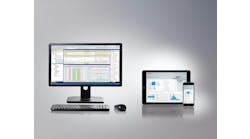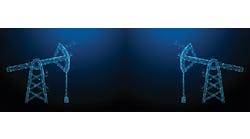In this episode of Control Amplified, Peter Zornio, CTO at Emerson Automation Solutions, joins Control’s Jim Montague to talk about computing at the edge of process automation and control systems. They discuss how what's happening now is different than former distributed control efforts, how edge computing works and how users can take advantage of it.
Transcript
JIM MONTAGUE: Hi, this is Jim Montague, executive editor of Control magazine and ControlGlobal.com, and this is the third in our new Control Amplified podcast series. In these recordings, we're talking with different experts about important topics in the process control and automation field, and go beyond our print and online coverage to explore some of the underlying issues affecting users, system integrators, suppliers and other professionals in these industries.
For our third installment, I thought it might be useful to talk again with Peter Zornio, chief technology officer at Emerson Automation Solutions, who provided some much-needed expert commentary and content for my "On the edge" cover article in Control's February 2019 issue. Like all of our recent podcast participants, Peter has clued me in about more than a few technical issues to me over the years, and provided clear explanations I could in turn relay to readers.
Well, Peter, sorry for the build up, but thanks for talking to us today.
PETER ZORNIO: Always a pleasure talking to you, Jim.
JM: OK, let’s get started. When I interviewed everyone earlier, I asked if "edge computing" wasn't just "distributed control" in new clothes, and you mentioned there’s a big vocabulary change related to it. Can you talk about that?
PZ: Sure. Fundamentally, actually, we in the automation space have been doing a lot of concepts you hear bandied about in the digital transformation and IoT world now. You hear them bandied about as if they’re brand new things, where they’re things that really we have done and edge computing is one of those. So, fundamentally, when people say edge computing they mean running an application or software to analyze data close to the source of where the data is generated, and basically, that’s exactly what we have done for many years with distributed control and DCS systems and PLCs.
So, yes, edge computing in some ways to us in automation really is distributed control in new clothes, but it’s not unique in being the only thing that I see being relabeled in the bold world of digital transformation. Digital twin is one of those terms that’s very popular now and it really is the modeling that we’ve been doing in automation for a long time, the idea of having a digital model of something that you can run applications against. People love to use the term AI and ML, and we’ve been doing a number of things in that space already with things like fuzzy logic. You always hear about algorithms, or sorry, we always used to talk about algorithms, and now of course, that term has been swept up in the whole terminology around analytics. So, I’ve actually somewhat bemused some time as to some of the more fun terms that the IT world and the general digital transformation world has come up with for things that we’ve actually been doing in the automation space for a long time.
JM: Cool. Is there any, I guess, maybe like a phrasebook we should have if we hear some of the new terms, we might want to think about what the old term might be? Was there any other ones?
PZ: Well, those are just some of the big ones I think that come to my mind right now, are those three or four.
JM: Usually, reporting gives me a better understanding of my topics, however this time, the definition of "edge" seemed to get more hazy as I went along. I mean, "edge" means you're not at the "center," implies you maybe could fall off, but I don't think numbers and the microprocessors really care where they do the crunching, so why should users?
PZ: Yeah, that’s a good point. And again, edge I think is one of those terms that were invented as we started talking about IoT and digital transformation, and, to me, it was a term invented by the IT folks who knew about data centers, knew about cloud computing, but this idea of actually pushing computing down to where data was being generated was a new idea to them. And so, because it wasn’t centralized and it wasn’t in the cloud, they came up with this idea, well it’s happening at the edge - it’s happening down where the data is being generated and at the first step in the whole Internet transference of the data forward.
Now, as far as why users should care, there really is, you know a lot of this discussion between edge and cloud or whatever, is sometimes talked about like there’s a winner and a loser. Well, in reality, both have a very important role to play, and in a typical architecture both are going to coexist and both will continue to coexist well into the future because they have certain advantages compared to the other computing approach and alternative.
For more, listen to the Control Amplified podcast.
Latest from Data Acquisition

Leaders relevant to this article:


